About dolphins and barracudas: the demand for multi-purpose submarines is growing in the world. Part of 2
Р 'Р ± СѓС ... ту СевероморскР°, РіРґРµ РЅР ° С ... одится С € тР° Р ± СЂРѕСЃСЃРёР№СЃРєРѕРіРѕ РЎРІРЅРІРІ fleet, ... RІS RѕRґRoS, SЂRѕSЃSЃRoR№SЃRєR ° SЏ RґRoR · RμR "SЊ-SЌR" ‡ RμRєS,SЂRoS RμSЃRєR ° SЏ RїRѕRґR "RѕRґRєR ° P'-402 R'RѕR" RѕRіRґR ° (RџSЂRѕRμRєS, 877 In "RџR ° F" C ‚СѓСЃВ”, РІ РєРѕРґРёС „РёРєР ° С † РёРё РќРђРўРћ - В“ РљРёР ”РсВ”) (Р ± Р ”ижний РїР” Р ° РЅ, С „Рсто РІРЅРёР · Сѓ). P · P SЌS,RѕRіRѕ RїRѕSЂS,R ° SЂRѕSЃSЃRoR№SЃRєRoRμ RїRѕRґR "RѕRґRєRo SѓS ... RѕRґSЏS, RЅR ° RїR S,SЂSѓR °" ° RoSЂRѕRІR RЅRoRμ RїRѕRґRѕ P "SЊRґS <P ‡ ° SЂRєS,RoS RμSЃRєRѕRіRѕ From € RμR" SЊS "P °. РџРѕСЃР »РµРґРЅРёРј РїРѕРєСѓРїР ° тел ем РјРѕРґР »РѕРґРєРё РєР» Р ° СЃСЃР ° РљРёР »Рѕ стР° С €Р ° С »Р ° С °Р ° С °Р ° С ° С СЂРёРЅР ° проектР° 636.1 РїСЂРёР ± С ‹Р» Р ° РІ РІРѕСЂС ‚РљР ° РјСЂР ° РЅСЊ РІ 2016 РіРѕРґСѓ. RЎSѓR ° ± RјR SЂRoRЅS <SЃRμRјRμR№SЃS,RІR ° RљRoR "of the PS (RџSЂRѕRμRєS,S <877 Ryo 636) SЃS ‡ RoS,R ° SЋS,SЃSЏ RїSЂRμRІRѕSЃS ... RѕRґRЅS <RјRo RїR" P ° S,S "RѕSЂRјR ° RјRo SЃ RѕS RμRЅSЊ RЅRoR ‡ · ° F RєRoRјRo RєSѓSЃS,RoS ‡ RμSЃRєRoRјRo SЃRoRіRЅR ° S,SѓSЂR RјRo ° C ‡ S,Rѕ, RїRѕ RјRЅRμRЅRoSЋ ° F RјRμSЂRoRєR ° RЅSЃRєRoS ... SЌRєSЃRїRμSЂS,RѕRІ, RґRμR "P ° RμS, Roes ... RїSЂR ° RєS РёС З РµСЃРєРё неподдР° СЋС ‰ РёРјРёСЃСЏ РѕР ± РЅР ° ружению РІ РїРѕРґРІРѕРґРЅРѕРј РїРѕР »РѕР¶Р¶
While the French shipyard DCNS is completely absorbed in the construction of boats under the Shortfin Barracuda Mk.1 program, the new-generation multipurpose Russian submarines of the Kilo class are still a proven platform of the Russian fleet and an important export component for the United Shipbuilding Corporation (USC). Among the foreign operators of this shock submarine is Iran, which is armed with three such submarines based in Bandar Abas. These ships have already become the talk of the town, and this is probably due to the fact that of the seven countries of the Persian region, only Iran has submarines in good condition. The Russian fleet has a current order for six submarines of the 686.3 Project with enhanced armament, of which five have already been transferred to its structure. Several former Kilo-class boats of the Russian fleet are currently available in the secondary market, these are either Halibut models of the original 877 Project, or this is the later 636 Varshavyanka Project. Vietnam became the last buyer of the upgraded Kilo class submarine, Indonesia could become a buyer (in order to counter China with active operations in the South China Sea), but it recently refused five shock submarines from the presence of the Russian fleet. Jakarta has already ordered three modern South Korean KSS-III submarines in order to strengthen its small fleet of two SSKs (recall, the abbreviation is used to describe conventional search and attack submarines with a non-nuclear power plant with torpedo or torpedo-missile armament - in the Russian terminology DPLR or DPLRK ), which could grow to 10 ships by 2030, if a major deal with Russia for the supply of Kilo class boats was implemented.
Designed by the St. Petersburg USC and a further development of the closed Lada project, the Amur family consists of two models (1650 and 950), which can be distinguished in appearance from the original Kilo family only by having a larger steering wheel and horizontal rudders installed on the wheelhouse. immersion. In fact, the new ships are the fourth generation of the Kilo family. The 1650 Cupid is larger and designed for long-distance hikes, while the 950 Cupid is armed with a vertical launch rocket launcher capable of firing a volley of five missiles at previously specified targets. The acoustic signatures of these submarines are several times smaller than the sonar signatures of outdated Kilo class boats. Both platforms are equipped with electronic warfare weapons of a new generation and can be equipped with an air-independent power installation on fuel cells, which significantly increases the length of stay and navigation range in a submerged position.
At the epicenter of friction
As already noted, Asia today is really located in the epicenter of the naval "propulsion". The continent is witnessing an emerging submarine race, with Indonesia, Japan, South Korea, Singapore and Vietnam vying for new and improved platforms due to the increase in China’s submarine fleet and its aggressive policy regarding the disputed remote archipelagoes in the South China Sea.
If some countries only recently began to create small submarine fleets from scratch, for example, Malaysia in order to protect its two large, distant parts and monitor the region, others went much further. Vietnam is currently in the process of adopting Kilo-class submarines as part of the fleet, all of which will obviously counteract the Chinese fleet in the East Sea (the Vietnamese name of the South China Sea). For its part, Singapore is still assembling its submarine fleet from the former Swedish modernized submarines of the Sjoormen class and a pair of equipped vessels of the Vastergotland class. All these boats were built at the Kockums shipyard and were bought from Sweden in order to form the new Challenger and Archer classes.
In 2014, Vietnam received its first two Kilo-class submarines of the 636.1 Project at the revived Cam Ranh naval base, this is HQ-182 At Noi and HQ-183 But Chi Minh City. They were later joined by HQ-184 Hai Phong, HQ-185 Da Nang, HQ-186 Khanh Hoa and HQ-187 Ba Ria Vung Tau submarines. Submarines with a displacement of 3000 tons and a crew of more than 50 people are capable of operating at a maximum depth of 300 meters and at a speed of 20 nautical miles. According to Vietnamese sources, they are equipped with six 533 mm caliber torpedo tubes and are equipped with ZM-54 Club torpedoes and anti-ship missiles.
In addition to Europe, Asia is the only part of the world where the original SSK are being developed and built today. This is, of course, China with its modern shipyard Wuchang Shipyards in the city of Wuhan and Jiangnan Shipyards in Shanghai and Japan with the shipbuilding companies Kawasaki and Mitsubishi from Kobe. South Korea (Hyundai in Okpo and Daewoo in Ulsan) builds the German project SSK only under license, but by the 2025 the first local modification should be ready - the 4000-ton submarine KSS-III (Jangbogo III), to a large extent based on the German project TKMS -HDW and ordered by Indonesia. Three boats will form the Nagabanda class, which will complement the two existing submarines of the Cakra class (the 209 Tour), which currently comprise the entire Indonesian submarine fleet. It is worth recalling that the company Kawasaki Heavy Industries is the heir to the centenary Japanese military shipbuilding industry with the richest experience, which, until 1945, built hundreds of ships for the Land of the Rising Sun. At that time, Japan had one of the most powerful fleets in the world.
A cut of the Amur-950 submarine (export version of the Lada 677 project), designed by the Rubin Central Design Bureau. Currently, only the submarine B-585 St. Petersburg - the lead ship of the 677 project Lada - is in trial operation.
Like everything that is produced in China for defense needs is covered with a veil of secrecy, no exception and submarines being developed for the Chinese fleet. The Chinese regime - a master in the art of copying and reverse engineering - has a tendency to hide what is in service and boast about what it does not have! Be that as it may, Chinese submarines have absorbed much of the original Soviet technology. Here, for example, the Yuan Type 041 and Song Type 039 diesel-electric submarines, built on the Wuhan and Jiangan Shipyards shipyards. The first Yuan Toure 041 class boat was handed over to the fleet in 1999 year, and about half a dozen such submarines were delivered to the Chinese fleet. Pakistan reportedly plans to buy six Yuan submarines from China in response to India’s expanding sea power. Some local experts say that these submarines, designated S20, are an export version of the 041 Tour. The only difference between the 041 Tour and the S20 is that the latter does not have an air-independent powerplant. Earlier, the Chinese fleet exploited 13 039 class submarines with a smaller displacement of 2250 tons. This type of submarine is the first fully developed by Chinese engineers, as well as the first class of Chinese submarines, which have a teardrop shape and, as a result, low hydrodynamic resistance. To reduce noise, the engine is mounted on shock absorbers and the casing is covered with rubber tiles. The control and movement of the submarines of this class is provided by four rudders and a seven-bladed propeller. In addition to the Chinese in the submarine widely used Western technology. The submarine Toure 039 has a length of 75 meters, a hull width of 8,4 meters and a draft of 5,3 meters.
Chinese diesel electric submarine Song Type 039
Japan, which has a very large and long experience in the construction and operation of the submarine fleet, today boasts ocean-class Soryu submarines with a crew of 65 people capable of going under water at 20 speed nodes. The head boat of this class was built at the Mitsubishi Heavy Industries shipyards shipyard and transferred to the Japanese fleet in 2009. The diesel styling electric submarines of the Soryu class are a further development of the Oyashio class diesel-electric submarines, the only visual difference between the two classes is the X-shaped vertical rudders of the latter. Soryu class submarines with their underwater displacement of 4200 tons have the largest displacement among the boats of post-war Japan. To date, eight submarines have been built (13 March, 2017, the Japanese Navy was transferred to the eighth submarine Sekiryu), and the Japanese Navy plans to transfer 11 of such submarines. This is the first submarine in the Japanese fleet with an independent power plant. All of them are equipped with a Stirling engine developed by the Swedish Kockums (manufactured under license by the Japanese company Kawasaki Heavy Industries), which allows them to stay under water for a long time. Submarine armament includes 30 torpedoes launched from six torpedo tubes. 10-I and 11-I submarines class Soryu will differ from previous models, the installation of lithium-ion batteries, which should provide an increased cruising range in a submerged position, especially at high speeds.
The Canadian Navy long-range patrol submarine Victoria (former British Upholder class submarine) at the Kitsap-Bangor naval base in December 2011. This is one of four old diesel-electric submarines with a tonnage of 2400 tons, renamed Victoria class, which is now the submarine fleet of Canada. Designed in the UK at the end of the 70-ies as a supplement to the nuclear submarines of the British fleet, the boats, after a short service, were withdrawn from the fleet to save money. In 1998, after the abolition of the program on nuclear submarines, Canada acquired them in order to replace the Oberon-class submarines recently decommissioned.
One of nine Type 214 / Son-Won-CIass / KSS-ll class submarines built at the Daewoo shipyard (DSME) from 2004. In the photo SS 075 An-Jung-Geun before launching in 2008 year. Four submarines of the same type were built in Greece by Hellenics Shipyards. South Korea, Greece and Portugal are exploiting submarines of this type, which are capable of diving to a depth of 400 meters.
Australian competition
Despite all its advantages and intensive lobbying by Japanese politicians, the Soryu submarines, along with the German Tour 216, lost in the 2016 year in the competition (about which, apart from statements by the Australian government, not very much) to re-equip the Australian submarine fleet of the French shipbuilding company DCNS and its heavier submarines class Shortfin Barracuda. The volume-striking deal includes the construction in Australia of at least 12 of ships with a displacement of 5000 tons to replace the outdated Collins submarines of the Australian fleet. This is one of the largest export contracts for the construction of submarines for the whole history submarine fleet and of course the most important for France and Australia. Some forward-thinking Australian analysts believe that Malcolm Turnbull’s politically weak current government in Canberra, by choosing DCNS among all bidders, wants an extra trump card in the form of Barracuda submarines with an open atomic option. In fact, the design and construction of new submarines in Adelaide can drag on for more than a decade. Both public opinion and political realities in Australia may change by that time largely due to the ever-growing Chinese threat in the South China Sea and other places. This was clearly seriously thought of by the Turnbull government, considering the very attractive proposal of the DCNS. Brand new submarines of the Barracuda class (or Suffren class) entering the service of the French fleet fall into the category of atomic submarines. In the variant Shortfin Barracuda Mk.1A, offered by the DCNS for the Australian fleet, the nuclear power plant must be replaced with a conventional diesel-electric one. Of course, everything will depend on the needs of Australia in the future and on whether the Australian nuclear submarine fleet will be a defining political tool, but at least the country will have a choice, because replacing the Shortfin Barracuda power plant back to nuclear will be quite practical. points of view. With the diesel-electric Soryu submarines and the 216 Tour, this option would not have been available initially. Wait and see.
Conducting a review of modern diesel-electric submarines (in the SSK foreign classification) and their weapons, one can not fail to mention the truly new elements of such submarines - the presence of vertical launch weapons, located behind the conning tower, which provides additional combat capabilities in the fight against surface and coastal targets as well as deep in the coast. In addition, state-of-the-art diesel-electric submarines may transport remotely operated underwater vehicles or mini-submarines to support the actions of special groups.
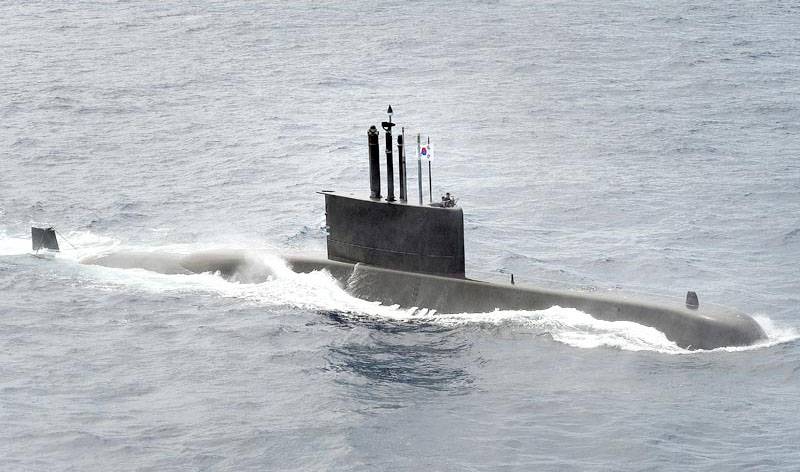
The Chang-Bogo Korean-class submarine (KSS-I) (the Ture 209 project of the German TKMS), built under license from the Hyundai Heavy industries shipyard. Today, fleets of a total of 14 countries exploit the shock submarines of this project, which is the standard in the world of submarines and is very successful for the German military shipbuilding
Stirling engine for conventional submarines
200 years ago, a Scottish engineer Robert Stirling invented an engine operating in a closed regenerative cycle (Stirling cycle), in which the working fluid (helium or hydrogen) is constantly in a closed space and changes its volume when heated and cooled. Initially, it was conceived as an engine that would replace the steam engine prevailing at that time, but its practical use for more than a century was limited mainly to low-power systems. The Stirling engine, which uses almost any heat source and has an 50% efficiency as compared to steam engines, is notable for its silent and soft work, which was a boon for submarines. The Swedes were the first to open the era of auxiliary air-independent propulsion systems in underwater shipbuilding. On three submarines of the Gotland class of the Swedish fleet, the Kockums shipyard installed Stirling engines. This allows them to be under water continuously up to 20 days and to observe the insidious Russian submarines in the shallow fairways of the Baltic Sea. Submarines with a combined diesel-stirling-electric power plant can be considered as one of the directions for the development of nuclear submarines.
The most modern diesel electric submarines class Soryu. Submarine Hakutyu (SS 503) on the way to the Sydney harbor during the exercises Nichi Gou Trident 2015. These exercises, conducted from 2009 by the Australian and Japanese fleets, are aimed at developing and improving the bilateral relations of these fleets by training marine skills and increasing the level of interaction. It is worth noting the inherent X-shaped vertical steering wheel
Oyashio (SS 590) enters one of the ports in Hawaii. The head submarine of the Oyashio class diesel electric submarines (4000 tons of underwater displacement), built by Kawasaki, was launched 20 years ago. The last 11-I boat of this class was launched in the 2008 year. All submarines of this class are in good condition, a SS 590, meanwhile, has been converted into a training boat for training submarine crews
The photo shows a Chinese submarine of the Yuan class on the Yangtze River north of Shanghai, where the Jiangnan Shipyard shipyard is located. Yuan class diesel submarines are a new generation of conventional shock submarines of the Chinese fleet. The 041 Yuan TEPL with AIP technology (Air Independent Propuision) can remain under water for two to three weeks. It is assumed that six such vessels were handed over to the Chinese fleet, and the first of them was seen in 2006 year near Shanghai during sea trials. In 2015, Kiangnan Arsenai (today Jiangnan Shipyard) celebrated 150 for many years.
More air
As many submarines exist, as many designers try to increase the time they spend underwater in order to increase their combat capabilities. With the introduction of AIP technology (air independent power plant), this has also become possible for ordinary non-nuclear submarines. These propulsion systems significantly increase the submerged cruising range and thereby reduce the risk of detection by the enemy. The German shipyard TKMS has developed and deployed one of the systems of this type - the HDW power cell power installation. The 212A and 214 submarines, equipped with high-performance fuel cell power units, became the first submarines in the world capable of super-long dives independent of external air sources.
For its part, the French shipyard DCNS is currently offering to order or, as a modification, the ABS complex (Autonomy Boosting Section), including several new technologies to increase the autonomy of submarines. Non-nuclear submarines, as a rule, have a scuba diving duration of about three days, so DCNS offers its ABS complex with three new technologies to increase this crucial indicator to three weeks. The first technology in the composition of ABS is a separate insert into the case with lithium-ion batteries of high capacity of a new generation. The easy-to-use technology allows you to maintain high speeds under water and to improve the stability of the power supply of the boat during the accumulation of power and high vibration. Lithium-ion batteries can be recharged directly to the sea. The autonomy of a standard submarine class Scorpene thus increased to seven days, which leads to a significant increase in its tactical capabilities.
The second solution is an air-independent Mesma power plant, compactly housed in a separate compartment of the body. The Mesma plant is based on a steam turbine and uses fuel that is always available in the ports; This technology is ideal for increasing the cruising range of submarines. A reality-tested Mesma installation increases the duration of a Scorpene submarine underwater by up to two weeks.
The third solution, the second generation air-independent power plant for fuel cells, is a technological breakthrough compared to current generation AIP systems in terms of performance, safety, operational flexibility and maintenance. This technology combines DCNS's key fuel cell innovation solutions. If necessary, hydrogen is produced from diesel fuel due to hydrocarbon reforming, while there is no need to store hydrogen on board the submarine. This revolutionary technology increases the duration of scuba diving to three weeks, which gives a decisive advantage in some theaters of operations. How long will it take for other shipbuilding companies in the world to copy or improve these advanced systems? Nobody knows. What is certain is that the global pursuit of traditional submarines is gaining momentum.
Materials used:
www.shephardmedia.com
en.dcnsgroup.com
www.oaoosk.ru
ckb-rubin.ru
www.thyssenkrupp-marinesystems.com
www.jiangnan.ship2yard.com
global.kawasaki.com
www.wikipedia.org
en.wikipedia.org
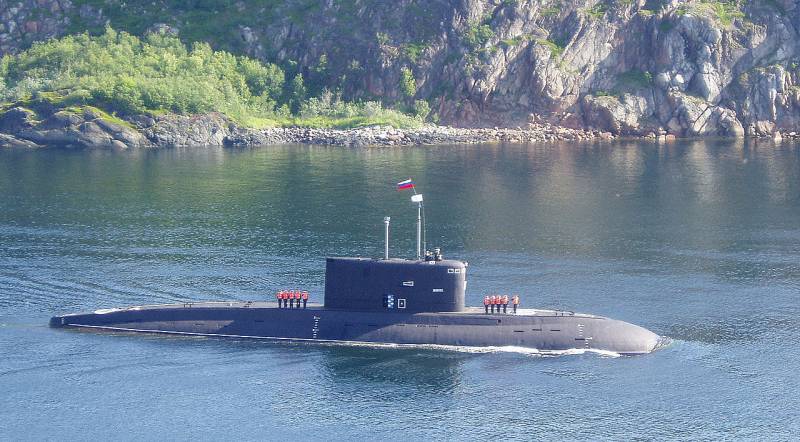
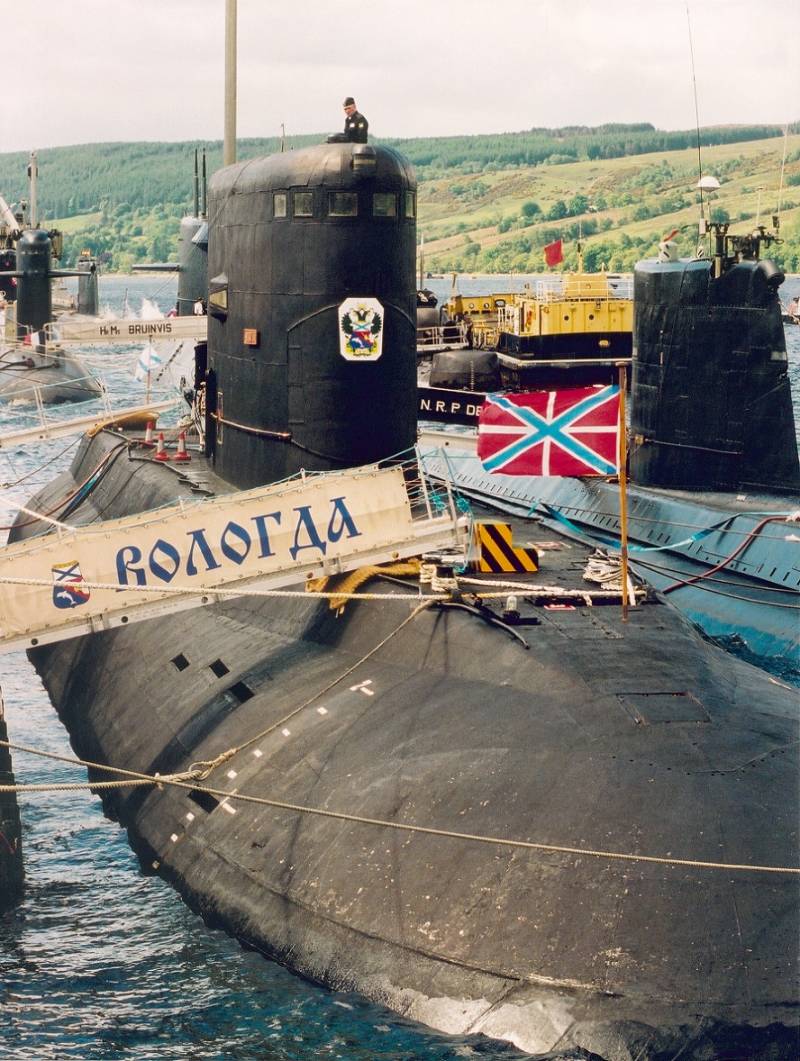
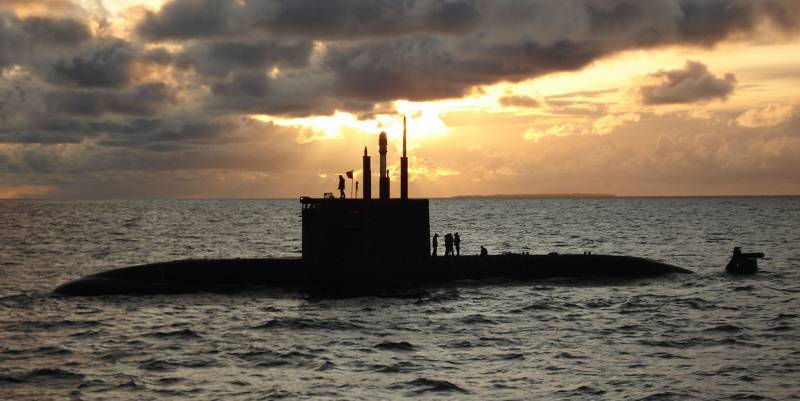
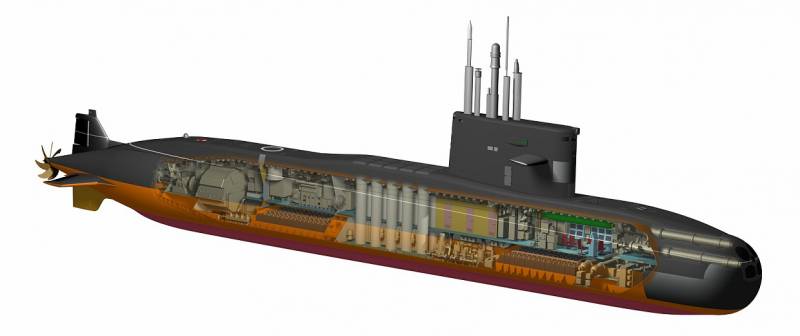
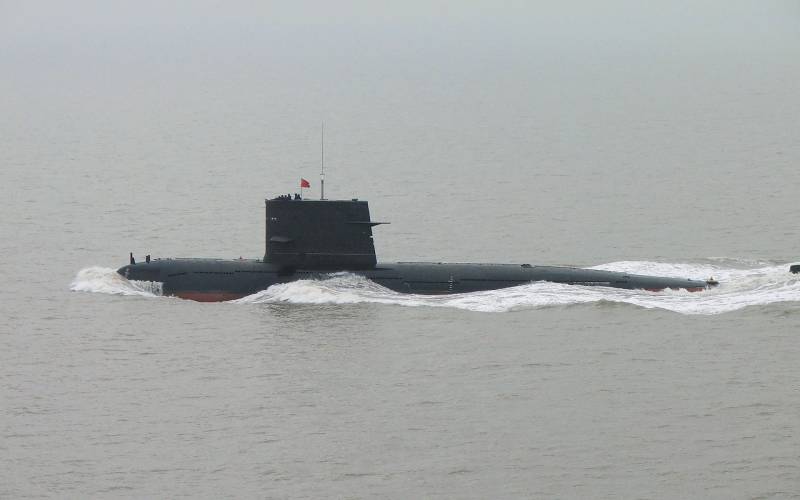
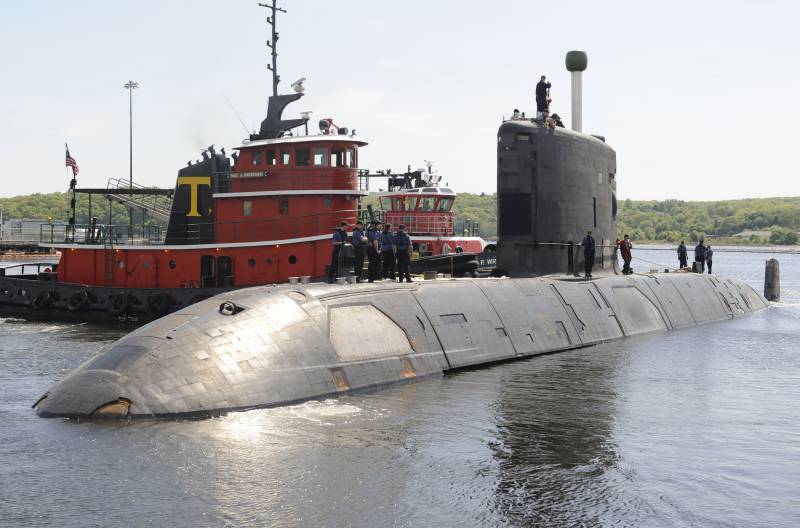
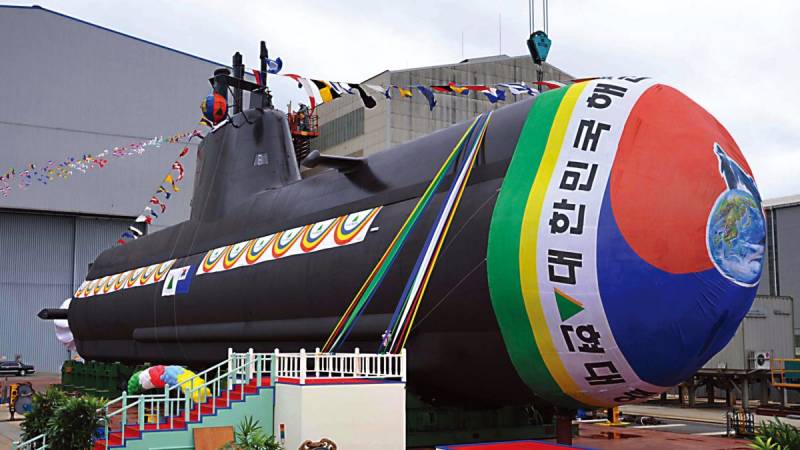
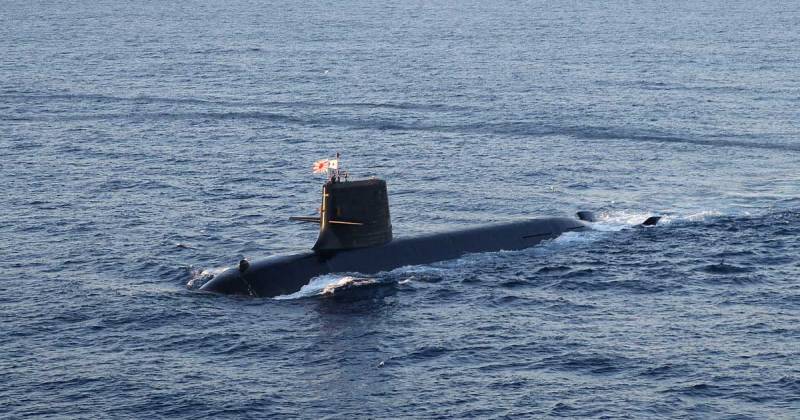
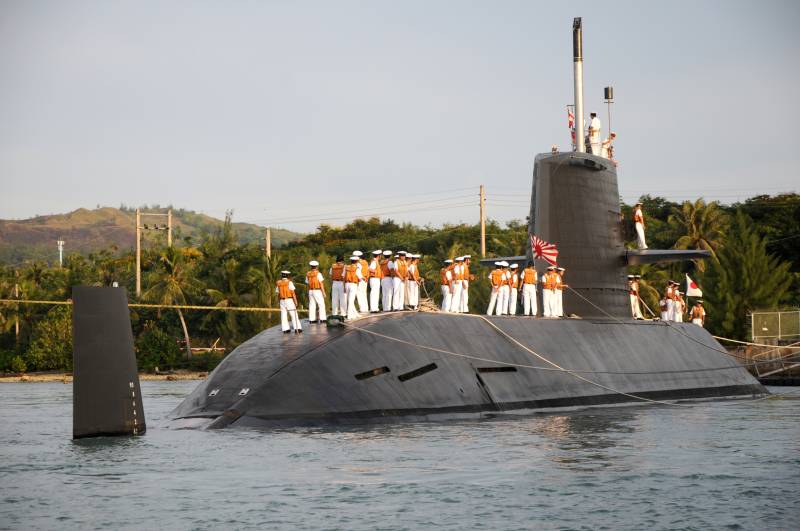
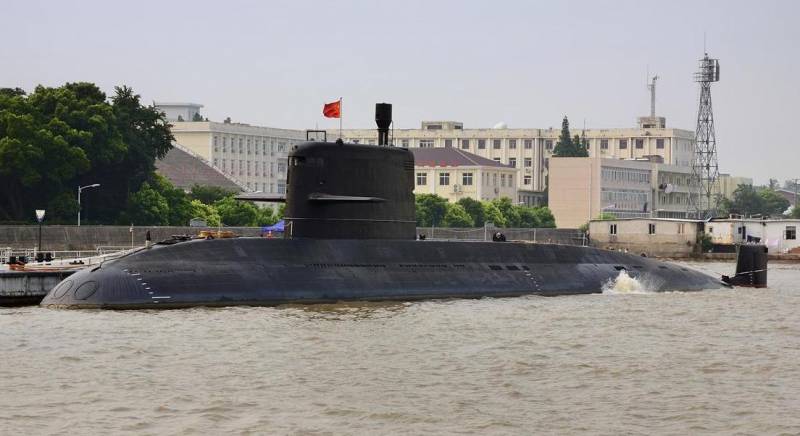
Information